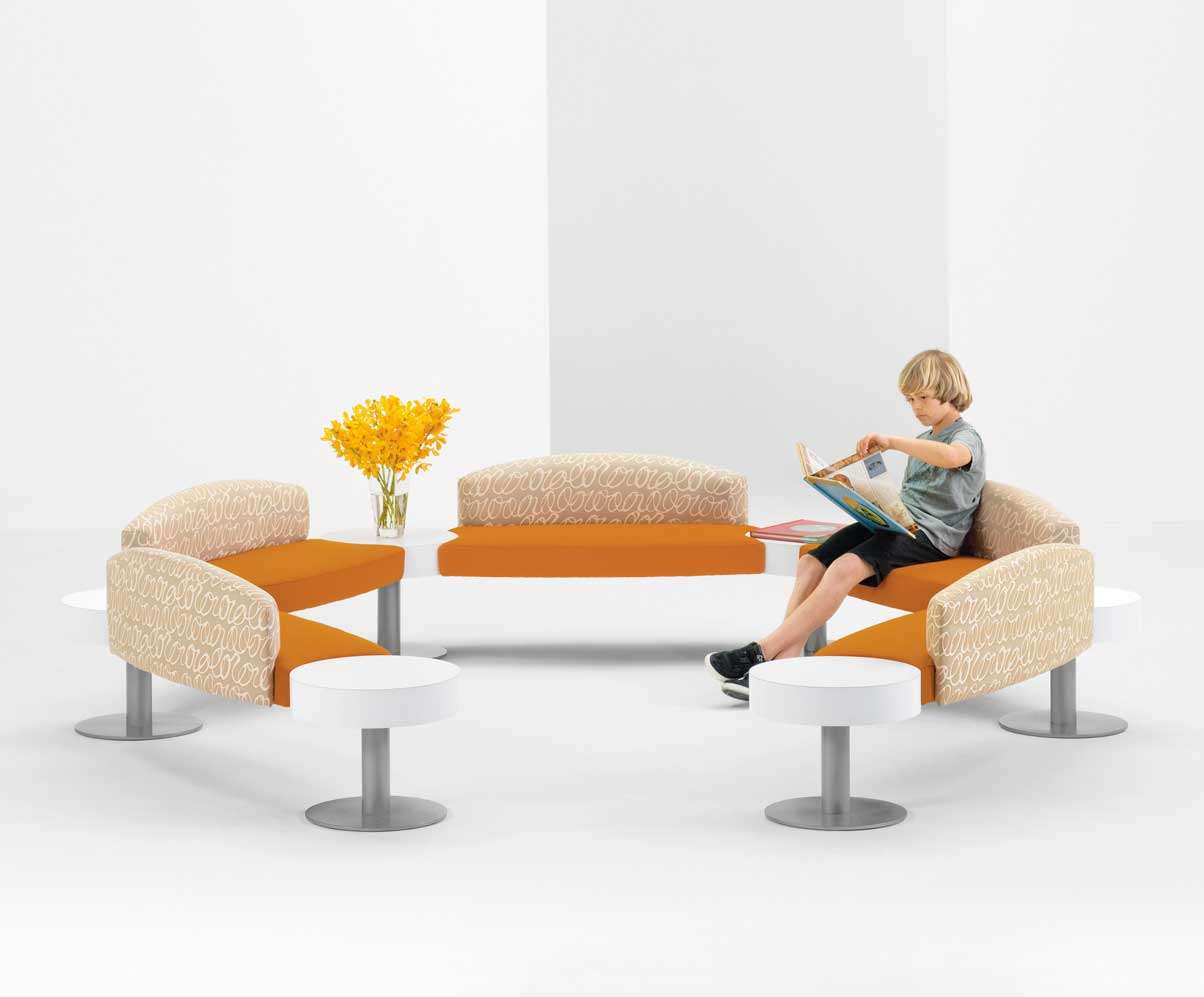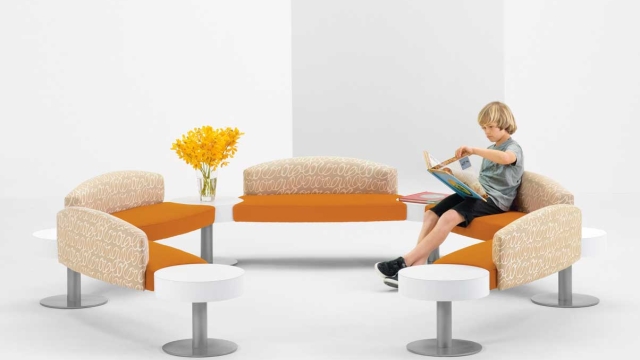Creating Comfort: Revolutionizing Healthcare Furniture
Healthcare environments can often be associated with feelings of anxiety and discomfort. However, the importance of creating a serene and soothing atmosphere in healthcare settings cannot be overstated. One key aspect of achieving this is through the use of innovative healthcare furniture. By revolutionizing the way we design and furnish healthcare spaces, we can enhance patient comfort, improve staff workflow, and ultimately contribute to better overall outcomes.
Healthcare furniture goes beyond mere aesthetics; its impact is deeply rooted in functionality and ergonomics. Designers and manufacturers are now focusing on creating furniture that not only meets the specialized needs of different healthcare settings but also prioritizes the comfort and well-being of patients. From waiting areas and patient rooms to treatment areas and staff workstations, every piece of furniture plays a crucial role in promoting an environment of healing, support, and tranquility. With innovative features such as adjustable seating, accessible storage, and antimicrobial surfaces, healthcare furniture has the potential to transform the way we experience medical care.
Designing for Patient Comfort
Designing healthcare furniture with patient comfort in mind is a crucial aspect of providing high-quality healthcare services. When patients come into a healthcare facility, they are often in a vulnerable state, seeking relief from their ailments. The environment and the furniture within it play a significant role in shaping their overall experience and comfort levels.
One essential consideration when designing healthcare furniture is ergonomics. Chairs, beds, and other seating options should be designed to support patients in a comfortable and relaxed position. This can have a positive impact on their physical well-being and help prevent any discomfort or strain. Ergonomically designed furniture not only enhances patient comfort but also aids in their recovery process.
In addition to ergonomic considerations, the material used for healthcare furniture is equally important. Choosing materials that are soft, breathable, and hypoallergenic can significantly contribute to patient comfort. This is especially crucial for patients who may spend long periods in one place, such as in-hospital beds. The right choice of materials can help alleviate any discomfort caused by allergies or skin sensitivities, ensuring a more pleasant experience for patients.
Furthermore, creating an aesthetically pleasing environment can enhance patient comfort and overall satisfaction. Incorporating soothing colors and natural elements in healthcare furniture design can create a calming atmosphere, reducing patient anxiety and stress. The visual appeal of the furniture also adds to the overall positive experience, making patients feel valued and cared for during their healthcare journey.
Designing healthcare furniture with patient comfort in mind goes beyond functionality. It acknowledges the importance of creating a soothing and pleasant environment for patients, which can ultimately positively impact their well-being and recovery. By prioritizing ergonomics, selecting appropriate materials, and incorporating aesthetic elements, healthcare facilities can revolutionize the experience patients have with furniture, promoting their comfort and overall satisfaction.
Ergonomics in Healthcare Furniture
Creating comfortable and supportive healthcare furniture is paramount in improving patient experience and overall well-being. When designing furniture for healthcare settings, ergonomics plays a crucial role in ensuring maximum comfort and functionality.
-
Design for Individual Needs: Healthcare furniture should be designed to accommodate the unique needs of each individual. This involves considering factors such as height, weight, mobility, and any specific medical conditions or limitations. By incorporating adjustable features into healthcare furniture, such as adjustable seats, armrests, and footrests, patients can have greater control over their comfort levels, enhancing their overall experience.
-
Optimal Posture Support: Maintaining proper posture is essential for patients, particularly those who spend long periods in healthcare environments. Ergonomic healthcare furniture should provide adequate lumbar support and padding to promote correct spinal alignment. Additionally, adjustable headrests and backrests can help patients find a comfortable and supported position, reducing the risk of strain or discomfort.
-
Ease of Use: Accessibility is a key consideration when it comes to healthcare furniture. Ease of use is crucial for both patients and healthcare professionals. Incorporating features such as easily accessible buttons, levers, or handles for adjusting the furniture can enhance convenience and promote independence for patients. Moreover, furniture with intuitive and straightforward designs enables healthcare staff to provide efficient care without unnecessary hassle or strain.
By prioritizing ergonomics in healthcare furniture design, we can revolutionize the way patients experience healthcare settings. Comfortable and supportive furniture not only improves patient satisfaction but also contributes to better health outcomes and faster recovery times.
The Role of Technology in Modern Healthcare Furniture
Technology plays a vital role in revolutionizing healthcare furniture, enhancing the patient experience, and improving overall care. With advancements in the field, healthcare furniture is being designed to integrate seamlessly with cutting-edge technology, ensuring comfort, convenience, and efficiency within medical environments.
One area where technology has had a significant impact is in adjustable beds and chairs. These pieces of healthcare furniture are now equipped with innovative mechanisms that allow patients to easily modify their positions. With the touch of a button, patients can adjust the height, angle, and firmness of their beds or chairs, enabling them to find their most comfortable and supportive positions. This not only promotes restful sleep and relaxation but also assists patients with mobility issues in finding optimal positions for mobility exercises or therapy sessions.
Another aspect where technology has transformed healthcare furniture is in the integration of digital features. Many hospital beds and patient chairs now come equipped with built-in touchscreens located within arm’s reach. These touchscreens allow patients to control various aspects of their environment, such as adjusting lighting, temperature, or even accessing entertainment options. By providing patients with control over their surroundings, healthcare furniture with integrated technology helps create a sense of empowerment and personalized comfort during their stay.
Additionally, the incorporation of smart sensors and monitoring devices in healthcare furniture has significantly improved patient safety and care. Advanced features such as weight sensors, fall detectors, and pressure mapping systems allow healthcare providers to remotely monitor patients’ vital signs and movements without intruding on their personal space. By gathering real-time data on patient health and activity, healthcare professionals can ensure early intervention in case of emergencies or changes in condition, enhancing patient safety and providing timely assistance.
In conclusion, the integration of technology within modern healthcare furniture has revolutionized patient care and comfort. From adjustable beds and chairs to digital interfaces and smart sensors, technology has enabled healthcare furniture to adapt to individual needs, improve patient autonomy, and enhance overall well-being. As technology continues to evolve, we can expect even more innovative solutions that will further transform the healthcare furniture landscape and contribute to better patient experiences.



